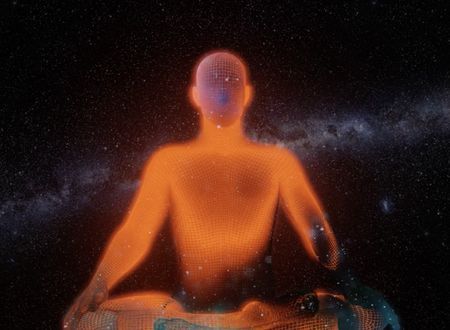“Vivekchudamani” is one of the most profound works of Adi Shankaraycharya, a saint of medieval India who propounded the Advaita philosophy. Adi Shankaraycharya has also written hymns and songs such as Bhaja Govindam (praising Lord Krishna), Saundarya Lahiri (praising the divine Mother) & Shiva Panchakshar Stotram, Shiva Manas Puja etc. (praising Lord Shiva). The list of his works is endless, just like the Infinite.
Swami Ranganathananda has been one of the Presidents of RamaKrishna Mission, which was founded by Swami Vivekananda, Swami Brahmananda and others in the memory of Ramakrishna Paramhansa. Swami Ranganthananda was born as Shankaran Kutty, in a Kerala village in 1908. He was attracted towards the teachings of Ramakrishna Paramhansa at an early age and joined it in 1926. He attained Maha Samadhi in April 2005.
He has given lectures on the Bhagwad Geeta and the Upanishads. In ‘The Message of Vivekchudamani’ he has chosen a majority of shlokas by Adi Shankaraycharya and explained their importance in the light of modern thoughts and modern needs. The book Forward has been written by none other than Dr. A.P.J. Abdul Kalam, the former President of India.
The book explores primarily the Gyan Marg of God-realization, devoted to the impersonal (nirguna – without any qualities that may be sensed or felt) aspect of the Infinite. The other path being the Bhakti Yoga, wherein we worship a personal form (saguna – with qualities that can be sensed – seen, heard, read, felt and even touched etc.) of God, in various forms such as Lord Vishnu, Lord Shiva or Divine Mother etc.
The book is quite thick (>600 pages) with 3 sections:
- The Basics of Spiritual Life
- Steps to Self-Realization
- The True Nature of Self
The book is fairly technical at some places, explaining the various aspects such as bio-energy, bondage, science of five sheaths and nature of mind that can attain samadhi and liberation.
Some excerpts from the book:
- World does us no harm, but worldliness does. This world in itself is neither good nor bad (note – it is beyond all dualities). Our understanding about it and the way we handle it makes it good or bad. To live in the world, is not the same thing as being worldly. (109)
- When we begin to feel the pressure of bondage, our struggle for freedom also begins. (144)
- When the sense objects are favorable, it (the mind or ego) becomes happy, and it becomes miserable when the case is contrary. So, happiness and misery (dualities) are characteristics of egoism, and not of ever-blissful atman. (221).
- The mental sheath is the sacrificial fire which, fed with the fuel of numerous desires be the five sense organs which serve as priests, and set ablaze by the sense objects, which act as stream of oblations, brings about this phenomenal universe. (347)
- The mind first creates an attachment in humans for the body and all other sense objects, that binds them through the attachment like a beast by means of ropes. Afterwards, the self-same mind creates in the individual an utter distaste for these sense objects, as if they were poison, and frees them (humans) from bondage. (357)
You may have noticed the technical stuff involved, hence the subject matter could be overwhelming sometimes, so if you are interested in reading this book, please give it time. Swamiji has put a lot of effort in explaining the original sutras. He is just brilliant. I wish I had a chance to just see him once in person.
Please buy the book only from RamaKrishna Mission’s book stalls or website (Advaita Aashram). On other websites, I have seen this book being sold for profit.









Comments & Discussion
14 COMMENTS
Please login to read members' comments and participate in the discussion.